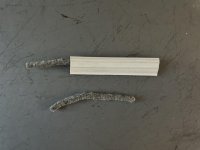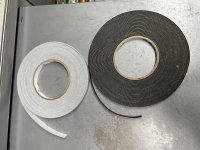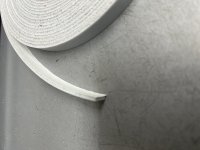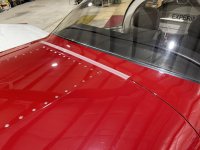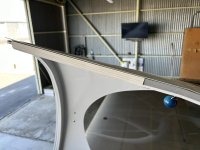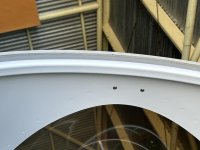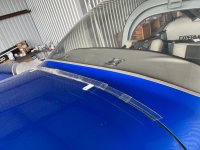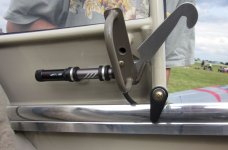HFS
Well Known Member
This is just a little twist I have used on my "floppers" for many years for sealing to the cockpit rails. Haven't tried it with a tip-up, but I think it would work pretty much the same.
For the main seal I use Macklinburg-Duncan 68676 "All Purpose Silicone Gasket"
- the white stuff shown in the pic. Approximately 1/2" wide, squeezes down to approx. 1/16", is hollow, is adhesive backed, and in cross section, it is "teardrop" shaped.
What being hollow does is to allow the installation of 1/8" soft felt cord in the hollow space to "plump" up the thickness if needed - McMaster-Carr P/N 8767K3.
Also, the gap to be sealed may not be uniform along its length - maybe 3/32" at one end, and 5/32" at the other. With the cord - just install it from the wide end until you get to the point where the taper is (somewhat) accommodated. If you have trouble "pushing" the cord into the tube, just decide how far (or all the way) in the tube you want the cord to go, "slit" the top of the seal at that point, and use a pull wire (think electrician) to pull the felt cord through.
HFS
For the main seal I use Macklinburg-Duncan 68676 "All Purpose Silicone Gasket"
- the white stuff shown in the pic. Approximately 1/2" wide, squeezes down to approx. 1/16", is hollow, is adhesive backed, and in cross section, it is "teardrop" shaped.
What being hollow does is to allow the installation of 1/8" soft felt cord in the hollow space to "plump" up the thickness if needed - McMaster-Carr P/N 8767K3.
Also, the gap to be sealed may not be uniform along its length - maybe 3/32" at one end, and 5/32" at the other. With the cord - just install it from the wide end until you get to the point where the taper is (somewhat) accommodated. If you have trouble "pushing" the cord into the tube, just decide how far (or all the way) in the tube you want the cord to go, "slit" the top of the seal at that point, and use a pull wire (think electrician) to pull the felt cord through.
HFS



